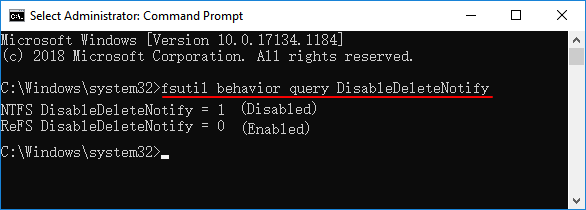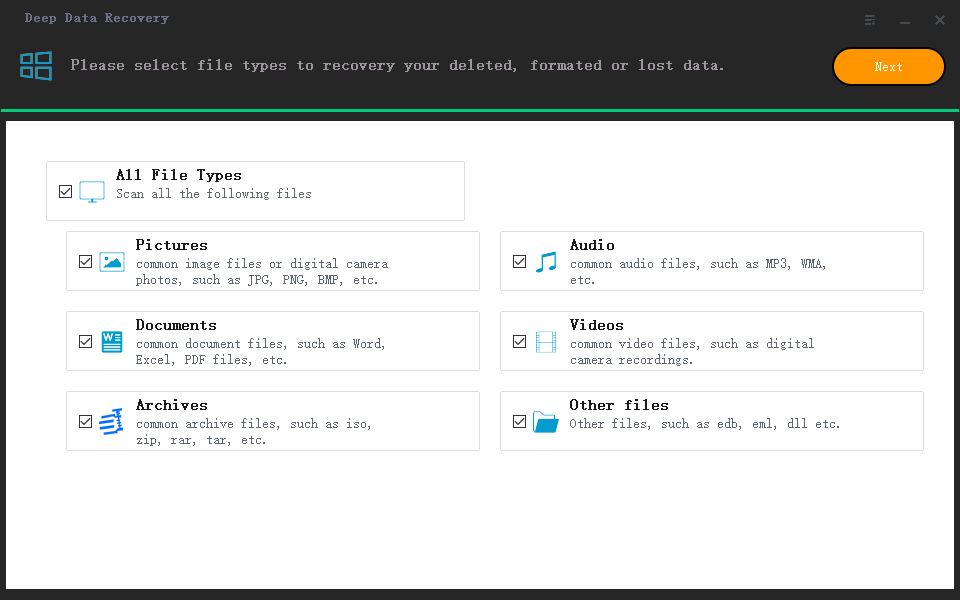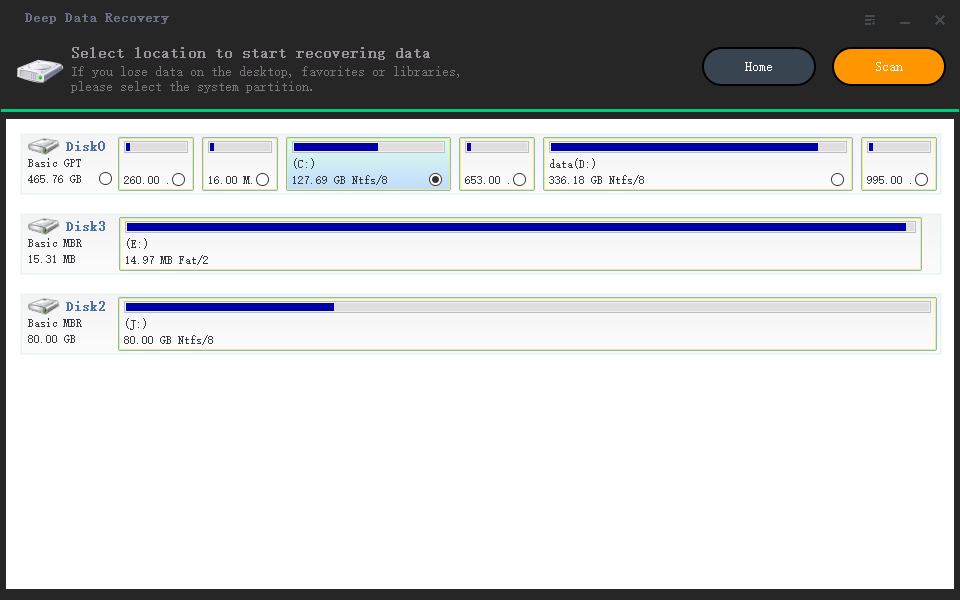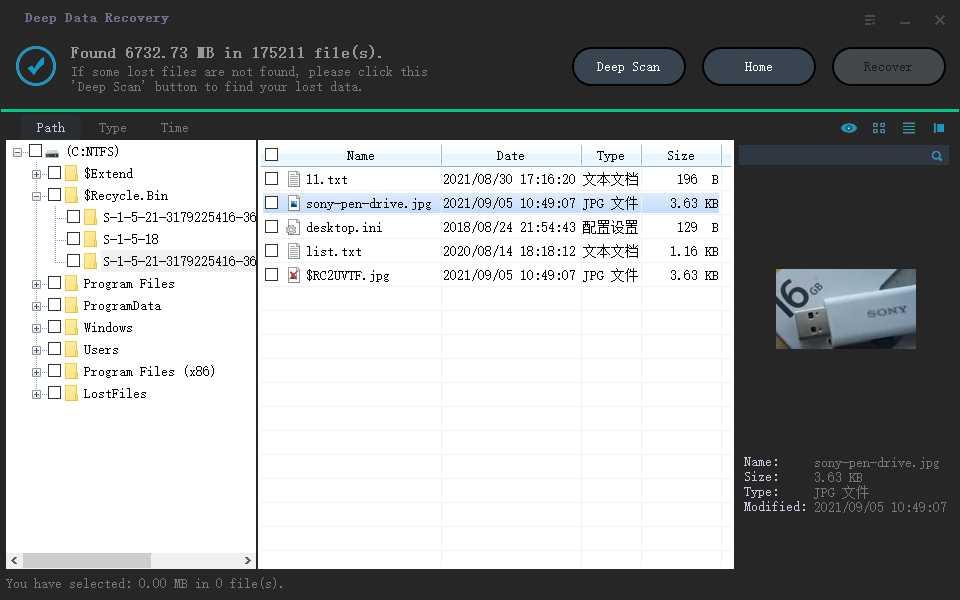How to Enable/Disable TRIM on SSD in Windows 10 [2021 New]
On this page, we'll show you how to check if the TRIM on SSD is enabled or disabled, and show you how to enable TRIM on SSD in Windows 10/8/7 using command lines or freeware - Deep Data Recovery. Follow to enable or disable TRIM on your SSD now.
Are you looking for a simple way to enable or disable TRIM on your SSD? On this page, you'll find two reliable ways to enable SSD TRIM in Windows 10/8/7. We also gathered some practical tips to protect your SSD data after you enable or disable TRIM on SSD.
Follow to learn how to enable TRIM on SSD and apply tips to protect your SSD data now:
PAGE CONTENT:
- #1. Check If TRIM Is Enabled On Your SSD
- #2. How to Enable TRIM on SSD in Windows 10/8/7 (Two Ways)
- #3. Bonus Tip: Data Recovery with SSD TRIM Enabled on Windows 10
About SSD TRIM, Everything You Need to Know
Before you start enabling or disabling TRIM on SSD, here is some basic information that we think you should know:
1. What Is SSD TRIM?
2. Should You Enable TRIM on SSD?
3. How Often Should SSD be TRIMMED?
TRIM on SSD (Solid-State Drive) is an Advanced Technology Attachment command that tells the SSD to erase data blocks when they are no longer in use. By doing so, the SSD's controller can manage the storage space more efficiently and greatly improves the data reading and writing speed on SSD.
In a word, TRIM can greatly improve the performance of your SSD and extend its lifespan. So should you enable TRIM on SSD? Yes.
How often should the TRIM be enabled on SSD? To always obtain high performance with fast reading and writing speed on your SSD, it's advised that you always turn on TRIM.
To do so, follow the guide below to check if TRIM is enabled on your SSD. If the SSD TRIM is disabled, follow to learn how to enable it on Windows 10/8/7.
#1. Check If TRIM Is Enabled On Your SSD
Normally, TRIM is enabled on SSDs by default. But it may be disabled by mistake or via a third-party tool. Therefore, you must check if TRIM is enabled regularly on your computer.
You can check and manage the TRIM function on your SSD with the help of Command Prompt. If you are not sure about whether TRIM is in use, you can check if TRIM is enabled first.
To check if TRIM is on:
Step 1. Press Windows + X keys, click "Search" and type cmd in the Search box.
Step 2. Right-click "Command Prompt" and choose "Run as administrator".
Step 3. Enter the following command: fsutil behavior query DisableDeleteNotify and hit Enter.
- If the output is DisableDeleteNotify = 1, TRIM is currently disabled on your device.
- If the query result is DisableDeleteNotify = 0, the TRIM support is enabled on your SSD.

So how to turn on the TRIM if you see it's disabled on your SSD? Move to the next guide, we'll show you how to efficiently enable TRIM on SSD in Windows 10/8/7.
#2. How to Enable TRIM on SSD in Windows 10/8/7 (Two Ways)
To keep your SSD performance at a high level, it's suggested that you always enable TRIM on your SSD. Here are a way that you can try:
Enable TRIM on SSD via Command Prompt
If you prefer a Windows built-in way to enable TRIM on your SSD, follow the steps below:
Step 1. Right-click the Windows icon, select "Search" and type cmd in the Search box.
Step 2. Right-click "Command Prompt" and choose "Run as administrator".
Step 3. Type: fsutil behavior set DisableDeleteNotify 0 and hit Enter.

Now, SSD TRIM is enabled on your computer.
#3. Bonus Tip: Data Recovery with SSD TRIM Enabled on Windows 10
As mentioned above, TRIM indeed ensures the high performance of your SSD. But it eliminates the possibility of data recovery on your device because it completely erases the data blocks when you perform "delete" operations.
That's the reason why so many users want to disable TRIM to make their data recoverable. So is it possible to recover lost data even if the TRIM is enabled on your SSD? It depends!
When you accidentally deleted or format files on your SSD with TRIM is on, the sooner you take action, the better chance you'll have for SSD data recovery. Here below is the complete process of SSD TRIM data recovery:
1st. Disable TRIM on SSD Immediately
No matter how you lost data on your SSD, once you find files were missing on your SSD disk, disable TRIM on SSD immediately.
Step 1. Right-click the Windows icon, select "Search" and type cmd in the Search box.
Step 2. Right-click "Command Prompt" and choose "Run as administrator".
Step 3. Type: fsutil behavior set DisableDeleteNotify 0 and hit Enter.

2nd. Recover Data from SSD on Windows 10/8/7 As Possible As You Can
With SSD TRIM disabled, you can then apply reliable data recovery software like Deep Data Recovery to scan and find all your lost files as possible as you can.
1. Launch the deep data recovery software. From the main window, please only keep the file types you want to recover checked and selected. By default, all supported files are selected. It will slow download the pen drive data recovery process with the unwanted files selected to recover. Click "Next" to begin.

2. Next, you can see all drives on the computer, as well as your pen drive are listed in the main window. Please select the pen drive and click "Scan" to perform pen drive data recovery.

3. During the scanning process, you can see files are find by the software. They are sorted into categories on the left. If the files you're looking for are found, you can stop the scanning process right away. Preview the files and recover them to your computer by selecting "Recover".

By default, the Quick Scan is used in the first place. Quick Scan is effective to scan pen drive for deleted or lost files. However, if you do not find the target files in the result, you should try "Deep Scan" in the result window. It will scan deeper and more careful, trying harder to help you find the lost files.
3rd. Create Backup of Valuable SSD Files
After restoring the lost SSD data, the last but the most important thing that you should do is to create a backup of all valuable files from your SSD to an external hard drive.
To do so, you can either manually copy and save files to an external storage device or apply a reliable file backup software like Qiling Backup to selectively back up all your files at one time.
It's Your Turn, Enabling TRIM and Protecting Files on SSD
Enabling TRIM ensures the excellent performance of SSDs. But once you get your data lost on your SSD with TRIM on, you will lose it forever. So how to keep your SSD data safe with TRIM enabled?
Here are our suggestions:
- 1st, create a complete backup of your SSD disk data to an external hard drive.
- 2nd, if you don't have a backup, disable TRIM immediately once you lose data on SSD.
- 3rd, turn to reliable data recovery software - Deep Data Recovery to scan and find as much data as you can.
- 4th, after this, enable SSD TRIM in Windows 10/8/7 again.
Related Articles
- How to Fix Error Code 43 for USB in Windows 10 & Recover Data
- Fix No Writable WD Smartware Partition Found and Recover Data
- How to Fix External Hard Drive Takes Long Time to Open and Read
- Does Initializing a Disk Erase Data, Yes or No?